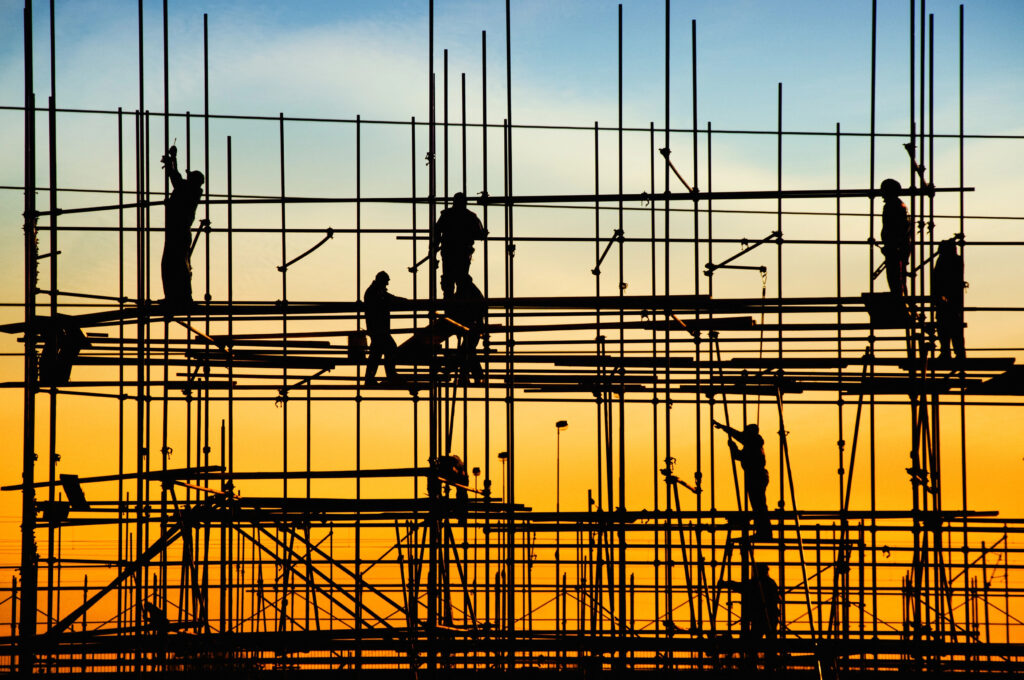What Is New York’s Scaffolding Law and How Does It Protect Construction Workers?
New York’s Scaffolding Law, formally known as Labor Law 240, is a critical piece of legislation designed to protect construction workers from gravity-related injuries such as falls or being struck by falling objects. This law places a duty on property owners and contractors to ensure that adequate safety measures and proper safety equipment are in place to prevent accidents at construction sites.

Understanding New York’s Scaffolding Law
Labor Law 240 applies to construction projects involving tasks like erecting, demolishing, repairing, or painting buildings. The law holds property owners and general contractors strictly liable for ensuring the safety of workers performing tasks at elevated heights. Strict liability means that workers do not have to prove negligence on the part of the property owner or contractor to recover damages for their injuries.
Key Protections Provided by the Scaffolding Law
- Proper safety equipment: The law requires employers to provide equipment such as scaffolding, harnesses, and safety railings to protect workers from falls.
- Preventing falling objects: Employers must ensure that materials and tools are secured to prevent them from falling and causing injuries to workers below.
- Absolute liability: Property owners and contractors are held responsible for any injury caused by a lack of proper protection, even if the worker shares some responsibility for the accident.
Common Injuries Covered Under the Scaffolding Law
Construction workers are often exposed to significant risks on job sites. Injuries resulting from scaffolding accidents can be severe and life-altering, including:
- Traumatic brain injuries
- Spinal cord injuries
- Broken bones and fractures
- Injuries caused by falling objects
These injuries often result in high medical bills, lost wages, and long-term disabilities, making it essential for injured workers to seek compensation.
Who Is Protected by the Scaffolding Law?
Labor Law 240 is designed to protect construction workers who are injured due to unsafe conditions while performing their job duties. However, the law does not apply to owners of single-family and two-family dwellings who do not direct or control the construction work.
Responsibilities of Property Owners and Contractors
Under New York’s Scaffold Law, property owners and contractors are responsible for implementing safety protocols and providing equipment to prevent gravity-related accidents. This includes:
- Ensuring scaffolding can bear the maximum weight required.
- Providing harnesses, safety railings, and other necessary equipment.
- Regularly inspecting safety gear and scaffolding for compliance with safety standards.
Failing to meet these responsibilities can make them liable for injuries that occur due to unsafe conditions.
Legal Options for Injured Workers
Workers injured in scaffolding accidents may have several avenues to recover compensation, including:
- Workers’ compensation claims: Provides benefits for medical bills and lost wages regardless of fault.
- Personal injury lawsuits: Injured workers can file claims against negligent third parties, such as property owners or contractors, under Labor Law 240.
- Claims for additional damages: Unlike workers’ compensation, lawsuits filed under the Scaffold Law allow workers to seek damages for pain and suffering.
How an Experienced Attorney Can Help
Navigating the legal process after a scaffolding accident can be challenging. An experienced personal injury attorney can:
- Investigate the circumstances of the accident to determine liability.
- Ensure compliance with legal requirements to pursue claims under the Scaffold Law.
- Help workers recover just compensation for medical expenses, lost wages, and pain and suffering.
Call Greenstein & Pittari, LLP for Help
Learn more about What Is New York’s Scaffolding Law and How Does It Protect Construction Workers. Call Greenstein & Pittari, LLP at (800) 842-8462 to schedule your free, no-obligation consultation. You can also reach us anytime through our contact page. Let us help you take the first step toward justice and recovery.
FAQ
What is New York’s Scaffolding Law?
The Scaffolding Law, or Labor Law 240, requires property owners and contractors to provide proper safety measures to protect construction workers from gravity-related injuries, such as falls or falling objects.
Who is responsible for injuries under the Scaffolding Law?
Property owners and contractors are held strictly liable for injuries caused by inadequate safety measures on construction sites.
Can workers sue under the Scaffolding Law if they share fault for the accident?
Yes. The Scaffold Law uses absolute liability, meaning workers can recover damages even if they share some fault for the injury.
What compensation is available for scaffolding injuries?
Injured workers may recover medical expenses, lost wages, pain and suffering, and other damages through personal injury claims or workers’ compensation.
Why is strict liability important in Labor Law 240?
Strict liability ensures that property owners and contractors are held accountable for failing to provide adequate safety measures, prioritizing worker safety over negligence disputes.
